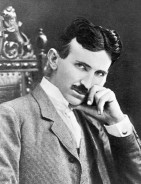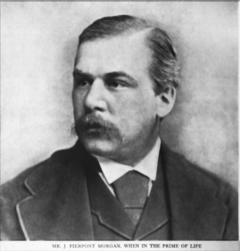
I am not a scientist. However, I do love science. To be exact, I love space science. If I had not become a history teacher, I would be teaching about outer space at some college. Instead, I chose history above all other pursuits….for a profession. I still read about space science when I can. Bu when history and science meet, as they do in this post, it is enough to break my writer’s block of the past month.
In the late 1800s, America had only begun to grasp the magical powers of science. America had always relied on engineering to build itself. From bridges and canals to railroads and telegraphs, America expanded across the continent slowly. Engineering played a huge role in spreading people and goods from one coast to the other. New methods of transportation and communication allowed the country to thrive economically. By the late 1880s, the country was in the last days of expanding on the continent and began to spread across the Pacific. We were beginning to produce more than we could consume.
As America spread, more and more people came to this country. Most settled in the cities along east coast. Those cities became more and more populated. With more people, come more problems. Cities tried lighting to enhance safety. However, kerosene lamps were not ideal. Electricity, on the other hand, was an idea whose time had finally come. By 1882, Thomas Edison began using DC (direct current) to power a street in New York. Electric street cars also began to appear around the country. But, in 1883, Nikola Tesla built his first transformer that turns AC (alternating current) from low voltage to high voltage. To contrast, AC power could travel much further with the aid of transformers while Edison’s DC current could only travel a mile before another power station had to be built.



(George Westinghouse, an Advertisement for AC, and Nikola Tesla)
Throughout the 1880s and 1890s, Edison, backed by financier J.P. Morgan, and Nikola Tesla, supported by George Westinghouse, battled across the country for who would light this land. One of the first battles came at the World’s Fair of 1893 in Chicago. Meant to be a celebration of the 400th anniversary of Columbus’ first voyage, the fair would be better known for a peek into the future of America. The Fair introduced the Ferris Wheel (the “Chicago Wheel”), Scott Joplin, the world’s first public “moving walkway,” phosphorescent lamps (they came before the fluorescent lamps), Cracker Jack, Juicy Fruit gum, Quaker Oats, Cream of Wheat, shredded Wheat, and the hamburger. In addition, Milton Hershey introduced his version of Chocolate, and spray painting was on display. One of the most visited exhibits was one on electricity.
At night the fair was lit by electricity. Who would light the fair would soon light the world. Edison and Westinghouse both put in bids to light the fair. General Electric Company (Edison’s and Morgan’s company) first bid to light the fair for $1.8 million. That bid did not go over well. The two did a second bid worth $554,000. Unbeknownst to General Electric, George Westinghouse, armed with Tesla’s new induction motor, proposed to light the fair for $399,000. Westinghouse won the contract. The effect of winning the bid would change history. Tesla’s AC polyphase system would be on display for not only the US to see, but the whole world. Originally, Tesla planned on using GE bulbs but Edison, still miffed, would not sell to Tesla and Westinghouse. Instead, Westinghouse came up with a more efficient double-stopper light bulb.
At night, the fair became a scene of wonderment as the lights displayed the wonder of the fair and its location.
“If evenings at the fair were seductive, the nights were ravishing. The lamps that laced every building and walkway produced the most elaborate demonstration of electric illumination ever attempted and the first large-scale test of alternating current. The fair alone consumed three times as much electricity as the entire city of Chicago. These were important engineering milestones, but what visitors adored was the sheer beauty of seeing so many lights ignited in one place, at one time. Every building, including the Manufactures and Liberal Arts Building, was outlined in white bulbs. Giant searchlights — the largest ever made and said to be visible sixty miles away — had been mounted on the Manufactures’ roof and swept the grounds and surrounding neighborhoods. Large colored bulbs lit the hundred-foot plumes of water that burst from the MacMonnies Fountain.” … it “was like getting a sudden vision of Heaven.” — The Devil in the White City, by Erik Larson.
On May 1, 1893, President Grover Cleveland pushed a button and near 100,000 incandescent lamps illuminated the White City. Westinghouse’s gambit paid off immediately and immensely. Over 27 million people came through the gates of the fair. Electricity, and AC current, was going to spread coast and coast and beyond. The “City of Light”, as it came to be dubbed, was powered by 12 thousand-horsepower AC polyphase generators. The fair showed how safe AC current could be. Westinghouse’s and Tesla’s exhibits displayed how electricity could reshape the nation.

Two years after the fair, Westinghouse again bested Morgan and Edison in winning the rights to the Niagara Falls power station. AC was the future. But at the fair, Tesla, the White City, electricity and lights stole the show. The lighting of the fair marked a turning point in the AC-DC battle to power the county. The Chicago Tribune dedicated much attention to this new but old science at the time.

Tesla would regale fair goers with his life story and how AC worked much to the wonderment of the public and other scientists. Some referred to his machines as “Tesla’s Animals.” What surprised most about the difference between AC and DC was the amount of heat produced. At a constant pace, DC produced more heat in light bulbs than AC power did or could.
In the next few years, AC power would become the standard for 80% of the country and most of the world. The fair had seen to that. However for Edison, Westinghouse, and Tesla, they would be pushed aside by J.P.Morgan as Morgan consolidated patents and companies. While Morgan lost the battles to light the fair and harness Niagara Falls, Morgan took over electricity, but he had to use AC power to do it.

Here is a PBS special on Tesla called “Master of Lightning”
For further reading: Devil in the White City
http://www.pbs.org/tesla/ll/ll_warcur.html
http://haygenealogy.com/hay/1893fair/1893fair.html
http://xroads.virginia.edu/~ma96/wce/title.html
Here is an interesting collection of photos from the fair
http://www.flickr.com/photos/brooklyn_museum/sets/72157606873382962/


[…] I crossed bridge and entered Electrical Building. Saw electric three-seated carriage go. Pretty lights in this place – changing, always. Home folks would smile to see the way we sit down on edges of platforms 1 ft. high and 1 in. […]
[…] big deviation there). The setting is 1893 Chicago, the city is filled with excited tourists, and the introduction of AC electricity has everyone there LIT. However, one man had slightly different plans for entertainment, he decided […]
[…] mysterious and downright terrifying characters, a time of radical change (science and electricity were finally becoming mainstream! Women were moving to cities to live and work alone!), a fair […]
[…] Reference: https://en.wikipedia.org/wiki/Nikola_TeslaPhoto Reference: https://historyrat.wordpress.com/2013/01/13/lighting-the-1893-worlds-fair-the-race-to-light-the-worl… […]
[…] Source: By Unknown – Downloaded from: https://historyrat.wordpress.com/2013/01/13/lighting-the-1893-worlds-fair-the-race-to-light-the-worl…, Public Domain, […]
[…] Image of Photograph of Nikola Tesla, a slender, moustachioed man with a thin face and pointed chin. https://en.wikipedia.org/wiki/Nikola_Tesla Author: Unknown – Downloaded from: https://historyrat.wordpress.com/2013/01/13/lighting-the-1893-worlds-fair-the-race-to-light-the-worl… […]
[…] What made the episode hilariously fun was how it had these historical figures just popping in and out, interwoven together with the major event at the time — and further research would prove that, hey, they were actually all there! […]
[…] The second industrial revolution marked by the use of electricity saw the electrical telegraph by Samuel Morse in 1844, Alexander Graham Bell’s telephone In 1876, and Thomas Edison’s first incandescent light bulb used commercially only in 1879. The 1893 world’s fair saw electricity used to light 100,000 lamps as the first large scale demons…. […]
[…] The battle between Edison’s direct current (DC) and Tesla’s alternating current (AC) is absolutely fascinating. And it’s a central topic of The Devil in the White City – one of the best books […]
[…] Nikola Tesla – Downloaded from https://historyrat.wordpress.com/2013/01/13/lighting-the-1893-worlds-fair-the-race-to-light-the-worl… […]
[…] The second industrial revolution marked by the use of electricity saw the electrical telegraph by Samuel Morse in 1844, Alexander Graham Bell’s telephone In 1876, and Thomas Edison’s first incandescent light bulb used commercially only in 1879. The 1893 world’s fair saw electricity used to light 100,000 lamps as the first large scale demons…. […]
[…] Lighting the 1893 World’s Fair: The Race to Light the World — The History Rat […]
[…] night was turned into day. That night in Chicago, dubbed the “city of lights,” started the race to light the world and thus began the endless summer of artificial light. […]
[…] of electric lighting in this year was not the Pfister Hotel (of course) but that of the entire Chicago World’s Fair of that year, thanks to Nikola Tesla and […]